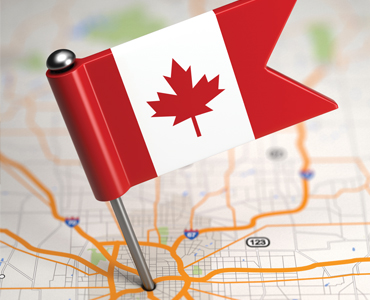
Beyond our borders
Food in Canada
Exporting & Importing food exports and NAFTAWhere in the world is all our exported food and drink going?

By Jonathan Hiltz
The great Robin Williams once said that Canada is “a big empty loft above a really great party.” Although the late comedian was doing his brilliant act at the time, his observation is not that far off the mark.
Canada is the world’s second largest landmass and yet there are only 36 million people living within its borders. When it comes to food and beverage products, one only needs to do the math to realize that the great white north depends heavily on exports.
According to Agriculture and Agri-Food Canada (AAFC), the food and beverage processing industry is the second largest manufacturing sector in Canada, with shipments worth 105.5 billion in 2014. That accounts for 17 per cent of the country’s total manufacturing shipments and for two per cent of the GDP. So where is all this food and drink going?
First and foremost, Canada’s biggest trading partner is the United States. AAFC says that in 2014, the U.S. accounted for a whopping 71 per cent of all food and beverage products sent out of Canada. But now that it’s 2016, has our relationship with the Americans evolved at all?
“I would say yes, in the sense that it’s grown,” says Sonia Vieira, a senior advisor for Export Development Canada (EDC). “The Canadian food processing industry has made a lot of efforts to increase exports and the U.S. has always been our major trading partner.” Vieira adds that for anyone in the Canadian food and beverage industry looking to expand using exports, the U.S. is the most logical step forward, but EDC encourages Canadian exporters to take the leap and consider other international markets of opportunity.
Much of what is exported to the U.S. these days relates to the growing importance placed on staying out of the doctor’s office through healthier eating. “The trend now is healthy, organic, natural products. The granola bars and cereals and [health] beverages too,” says Vieira.
Other sectors in Canada have grown, but not at the same rate. For example, the Canadian wine industry is making efforts to promote the fabulous vintages Canada has to offer, but it’s slow going. “It’s a small market because when people think about Canadian wines they think about icewine.” Vieira adds that the Canadian Vintners Association has launched a sizeable marketing campaign to help change the stereotype.
Another important region that food processors should keep an eye on is China. With a constantly growing middle class, China has developed a taste for imported food. “There are a ton of opportunities in China, it’s a fascinating market especially in e-commerce,” adds Vieira, noting that many Chinese consumers opt to buy their food online. That means exporters need to become acquainted with the various e-commerce platforms, like www.alibaba.com and www.YHD.com, that provide food and beverages to the Chinese market.
In other regions, NAFTA has made Mexico a big trading partner, and Vieira feels that exports south of the U.S. border will continue to increase, as well as exports to South America, Chile in particular. Outside of China, the other BRIC countries are still important, according to Vieira, as they account for more than 40 per cent of the world’s food consumption. “As incomes increase and food preferences shift, opportunity continues to rise for food, especially for meat protein and packaged or convenience goods.” She notes that in emerging countries such as China and India, consumers see quality Canadian goods as status symbols. “In Japan, South Korea and China, products like maple syrup and icewine, which are very Canadian, have tremendous opportunities.”
When it comes to partnering maple syrup and opportunity, Canadian companies have an advantage. Canada produces a staggering 80 per cent of the world’s maple syrup, with Quebec tapping more than 90 per cent. Exports of maple syrup were valued at $310 million in 2014.
The good news is that Canada continues to manufacture quality products and the world has clearly taken notice. Companies should be looking beyond our borders to ensure output is enjoyed in as many countries as possible. We’ve come a long way from simply exporting politeness and Hollywood movie stars.
Print this page